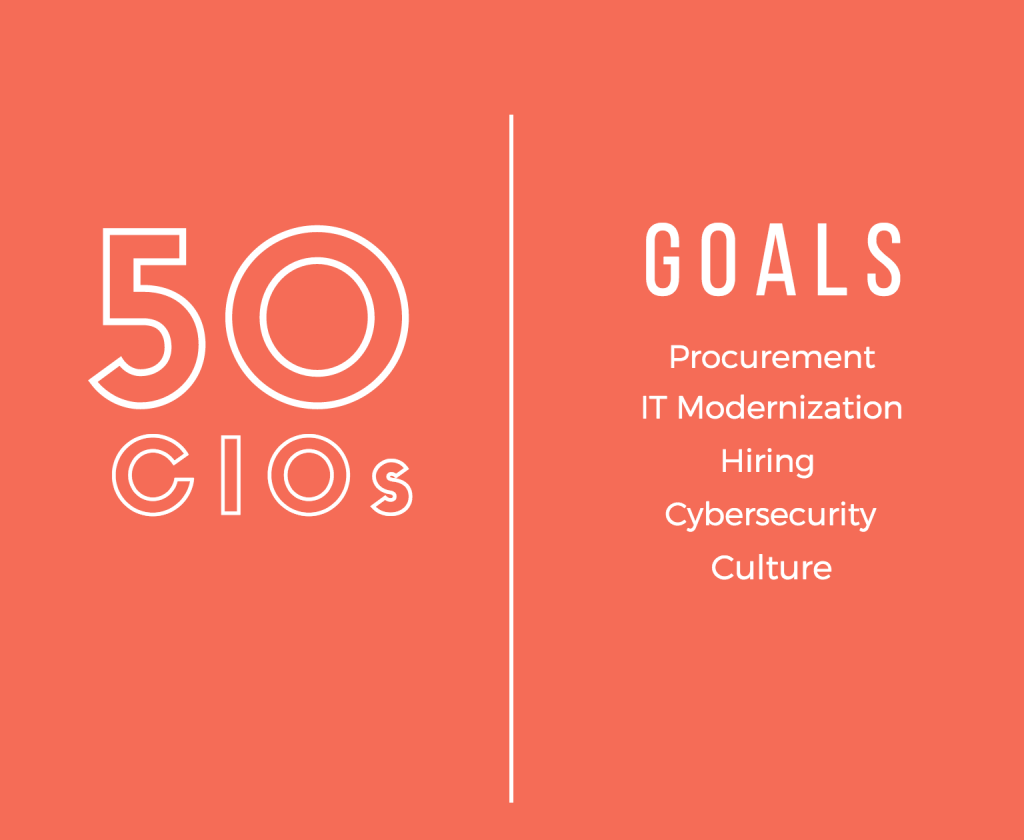Have you ever wondered what your Chief Information Officer is thinking about all day? What keeps them up at night? What makes them excited to go to work? What makes them want to pull their hair out?
At the National State Chief Information Officers annual conference, more than 30 state CIOs were on hand to address those questions. And their answers were all over the map.
Just consider that in a survey of state CIOs, 95 percent said they expected to use agile or incremental software development in 2017, but only 14 percent thought data analytics was a priority for their state. So agencies want to invest in new tech, but they don’t have the analytics priorities to back up if these new technologies are working or being implemented in an agile fashion.
The survey also discovered that CIOs were focusing on five top priorities.
- Procurement
- IT modernization
- Hiring
- Cybersecurity
- Culture
However, upon closer reflection, a lot of these challenges and priorities aren’t so easily siloed. The reason? Many of them actually are intertwined.
Take what’s happening in the state of Maryland.
David Garcia, Secretary of Information Technology for Maryland, had this to say about procurement: “For us procurement challenges are all around the culture. We asked vendors what we are getting wrong and how to make it better.” Garcia had previously worked for a vendor who refused to work with the Terrapin state because of the restrictive regulations around procurement. “Most of the changes vendors wanted were centered around terms and conditions. But there is such a fear of risk that our state is afraid to make those changes. We end up stuck.”
So is this a challenge of culture or procurement? Or both?
On the opposite side of the country, Arizona’s CIO Morgan Reed faces a different procurement challenge – enterprisewide purchasing. In essence, Arizona is moving towards a centrally focused procurement system. “We need to act like a $30 billion dollar organization, not 120 different organizations. We want to align with shares services and use a volume play for vendors,” said Reed.
That makes sense. The only problem is Arizona isn’t quite sure how many programs they are currently running in their networks. “We have five agencies that are all looking to buy separate e-license software. And that’s just on e-licensing, you can only imagine the number of programs were using in other aspects of our work.”
Is that an IT modernization issue or a procurement one? Or both?
Or take security issues in Indiana. We know that cybersecurity has been the top issue facing CIOs for the past seven years according to the NASCIO annual survey. But in Indiana, the state’s Chief Information Security Officer Tad Stahl doesn’t have direct access to the Governor’s Office or the legislature. “We are getting a lot more attention these days,” offered Stahl, “but we still have to go through the CIO.”
And Stahl isn’t alone: only 29 percent of states said they talk to their governor about cyber on a monthly basis.
So is this a cyber problem, a culture problem, or even possibly a hiring problem?
The problem is these days the challenges facing CIOs don’t fall neatly into a little box; they are complex, diverse and overlapping.
So what can CIOs do to combat these complex challenges? One quick fix is more communication across state lines. Sharing best practices is the real key to make substantial improvements quickly.
Another tip would be to create strong pilot programs where new technologies can be implemented quickly and outdated technologies can be removed without disturbing the entire agency IT ecosystem.
What best practices could you share from your state?
